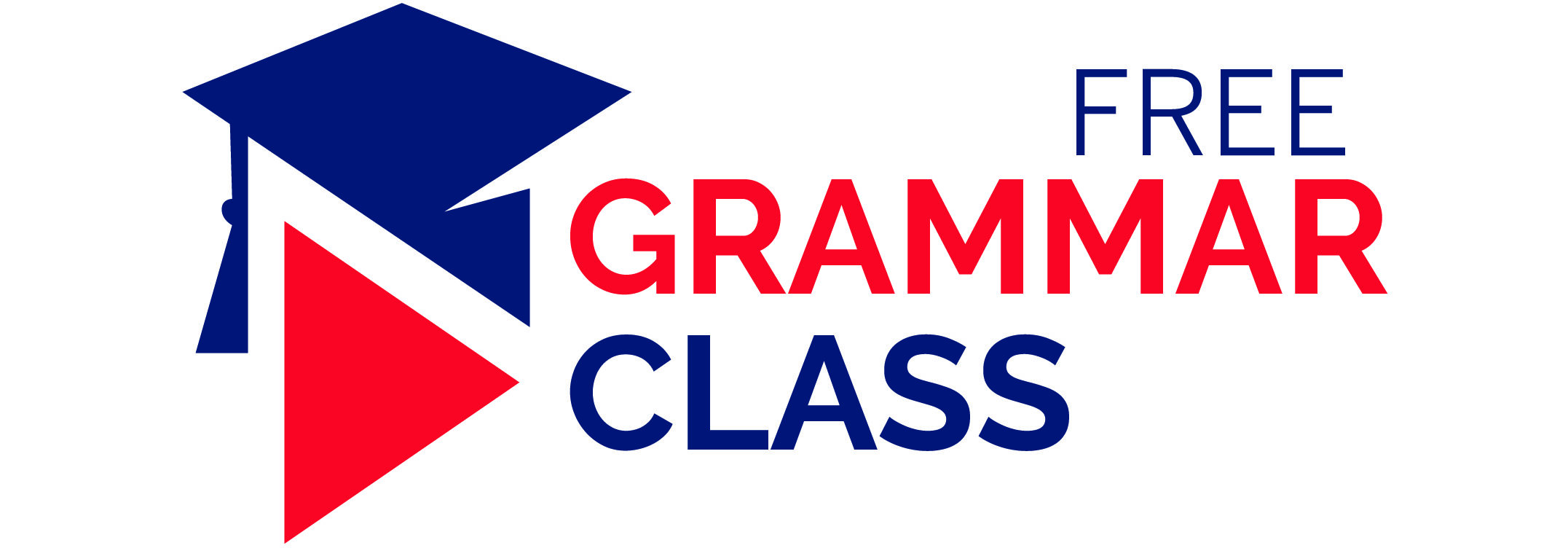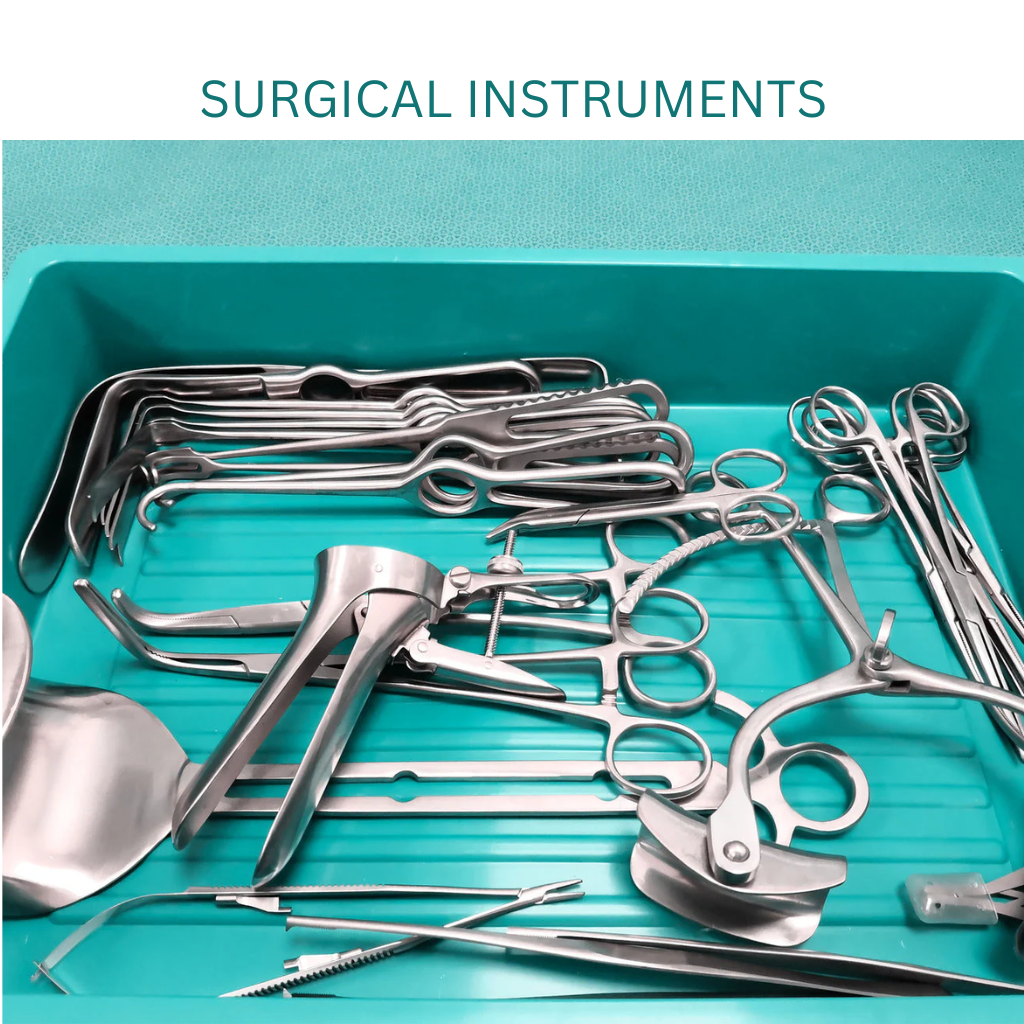Here’s a brief introduction to surgical instruments pictures with names in English. These tools are essential in medical and surgical procedures, each designed for a specific function like cutting, grasping, clamping, or retracting tissue.
Surgical instruments are specially designed tools used by medical professionals during operations. They vary widely in shape, size, and function depending on the type of surgery and tissue involved. Knowing their names and uses is crucial for healthcare workers, especially those in surgery, nursing, or medical studies.
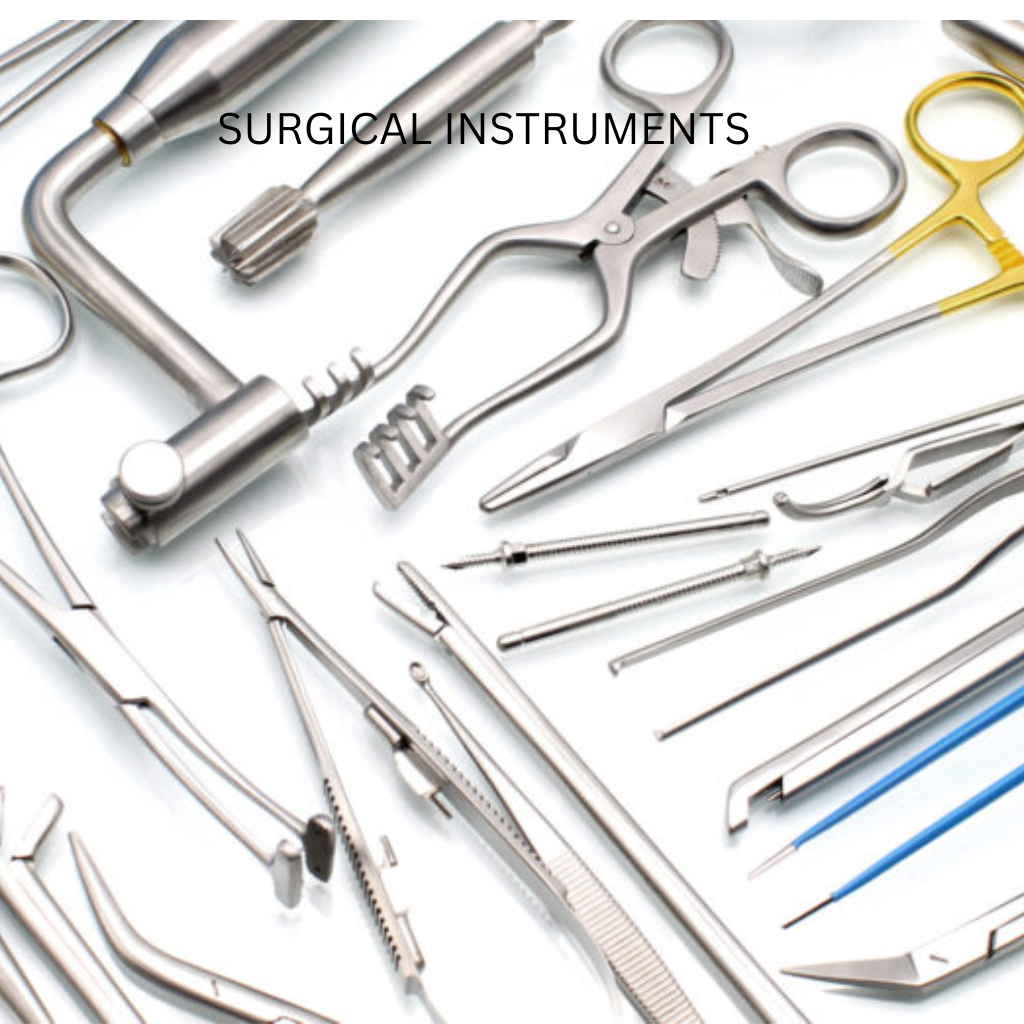
Cutting and Dissecting Instruments
Here is a detailed list of Cutting and Dissecting Surgical Instruments with their names and functions in English:
🔪 Cutting and Dissecting Instruments
These instruments are primarily used to cut tissues, skin, or sutures, and sometimes to dissect (separate) tissues during surgery. Precision and sharpness are key features.
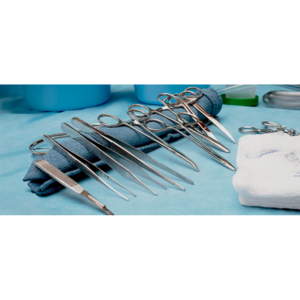
1. Scalpel
- Description: A small, sharp knife with a thin blade.
- Use: For making incisions in skin and tissue with high precision.
- Types: Comes with different blade numbers (e.g., #10, #11, #15), each used for specific types of cuts.
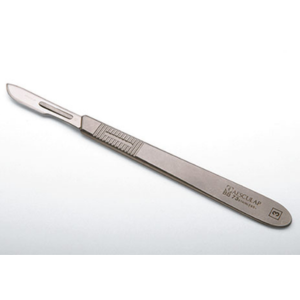
2. Surgical Scissors
- Description: Scissors made of surgical-grade stainless steel.
- Use: For cutting tissue, sutures, or materials during surgery.
- Types:
- Mayo Scissors: Heavy scissors used for cutting thick tissues like fascia.
- Metzenbaum Scissors: Lighter, finer scissors used for delicate tissue dissection.
- Iris Scissors: Small, sharp scissors used in fine surgeries like ophthalmic procedures.
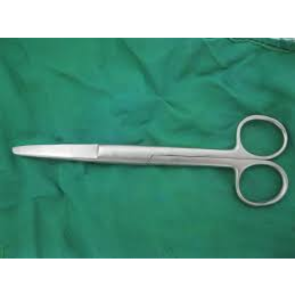
3. Bone Cutter
- Description: A heavy-duty instrument designed to cut through bone.
- Use: Used in orthopedic or dental surgeries to cut or remove bone.
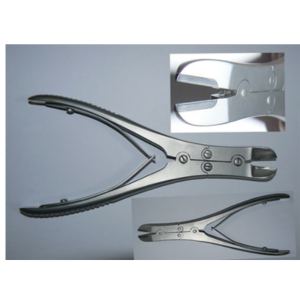
4. Gigli Saw
- Description: A flexible wire saw.
- Use: Used for cutting bone, especially in areas hard to reach with rigid instruments (e.g., skull).
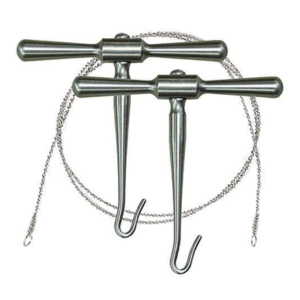
5. Chisels and Osteotomes
- Description: Hand tools used with a mallet.
- Use: For cutting or shaping bone. Osteotomes are beveled on both sides, while chisels are beveled on one side.

6. Tenotomy Scissors
- Description: Small, fine scissors with curved or straight blades.
- Use: Used for delicate dissection, especially in ophthalmic or pediatric surgeries.
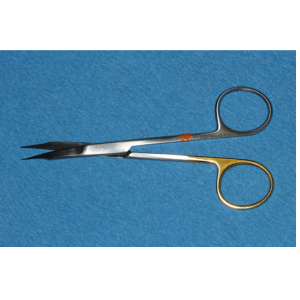
Here’s a detailed list of Grasping and Holding Surgical Instruments with their names and functions in English:
Grasping and Holding Instruments
These instruments are used to hold, grasp, or manipulate tissues, organs, or surgical materials like needles or gauze during surgery. They come in various forms to suit specific surgical needs.
1. Tissue Forceps (Thumb Forceps)
- Description: Tweezer-like instrument, may have teeth or be smooth.
- Use: Used to grasp and hold tissue during suturing or dissection.
- Types:
- Adson Forceps: Fine tips with teeth; good for skin closure.
- Dressing Forceps: Smooth tips; used for holding gauze or dressings.
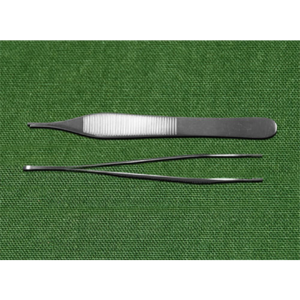
2. Allis Tissue Forceps
- Description: Forceps with short teeth and a locking handle.
- Use: Used to grasp and hold soft tissues firmly but gently.
- Note: Not used on delicate tissues due to its strong grip.
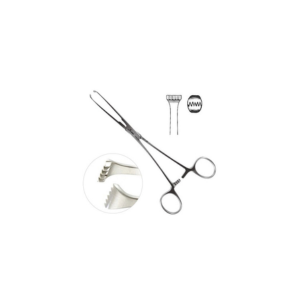
3. Babcock Forceps
- Description: Rounded, fenestrated tips with no teeth.
- Use: Used to hold delicate structures like intestines, fallopian tubes, or ureters without causing damage.
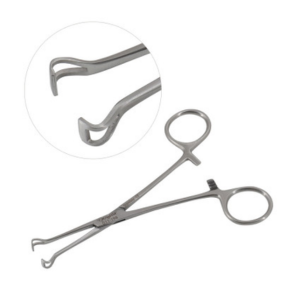
4. Kocher Forceps (Ochsner Forceps)
- Description: Heavy forceps with 1×2 teeth at the tip and a locking mechanism.
- Use: Used for grasping tough tissues like fascia or during orthopedic surgery.
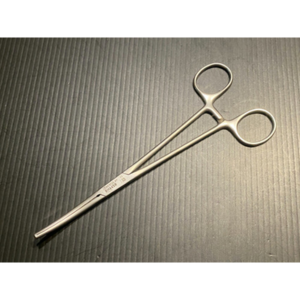
5. Needle Holder (Needle Driver)
- Description: Clamp-like instrument with a short, serrated jaw and a locking handle.
- Use: Used to hold a needle while suturing tissue.
- Types:
- Mayo-Hegar: Commonly used in general surgery.
- Mathieu: Spring-handled, used in delicate surgeries.

6. Towel Clamp (Backhaus Clamp)
- Description: Sharp-pointed clamp with a locking handle.
- Use: Used to secure surgical drapes to the skin or hold small items in place.
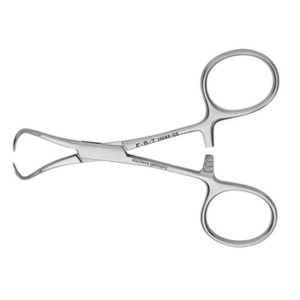
Clamping and Occluding Instruments
These instruments are used to control blood flow, compress tissue, or occlude (block) vessels or ducts during surgery. Most have a locking mechanism (ratchet) to maintain a firm hold without continuous pressure from the surgeon.
1. Hemostats (Artery Forceps)
- Description: Scissor-like instrument with a locking ratchet and serrated jaws.
- Use: Temporarily clamps blood vessels to stop bleeding.
- Types:
- Mosquito Hemostat: Small and delicate, used for clamping small vessels.
- Kelly Forceps: Medium-sized, partially serrated jaws, used for larger vessels.
- Crile Forceps: Fully serrated jaws, similar to Kelly but stronger grip.
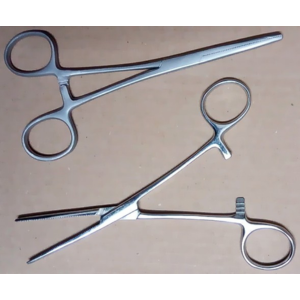
2. Kocher Forceps (Ochsner Clamp)
- Description: Strong clamp with teeth at the tip and a ratchet lock.
- Use: Used for clamping tough tissue (e.g., fascia) or large blood vessels.
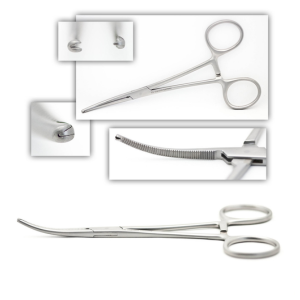
3. Pean Clamp
- Description: Large, fully serrated forceps.
- Use: For deep tissue or vessel clamping in major surgeries.

4. Satinsky Clamp
- Description: Angled, long vascular clamp with fine serrations.
- Use: Used in cardiovascular surgery to partially occlude large vessels (e.g., vena cava).
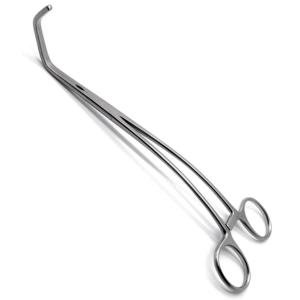
5. Bulldog Clamp
- Description: Small, spring-loaded clamp with atraumatic jaws.
- Use: Used in vascular surgery to temporarily block blood flow.
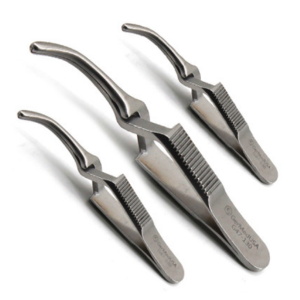
6. Right Angle Clamp (Mixter Forceps)
- Description: Long, thin clamp with jaws at a right angle.
- Use: For clamping and dissecting around blood vessels or tissue in deep areas.
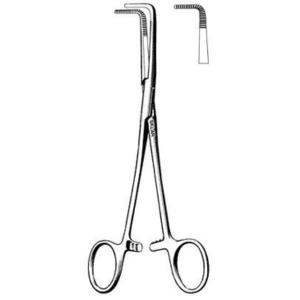
7. Doyen Intestinal Clamp
Use: Used to occlude intestines without crushing them during bowel surgery.
Description: Long, curved, lightweight clamp with atraumatic, smooth jaws.
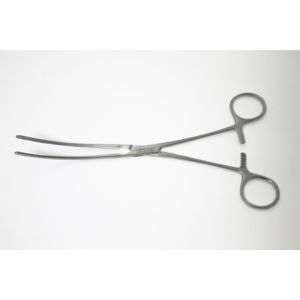
Retracting and Exposing Instruments
These instruments are designed to hold back tissues, organs, or edges of wounds to provide better visibility and access to the surgical site. They may be hand-held or self-retaining (lock in place without assistance).
1. Senn Retractor
- Description: Double-ended with one blunt end and one rake (toothed) end.
- Use: Used in small surgeries to retract skin, fat, or muscle.
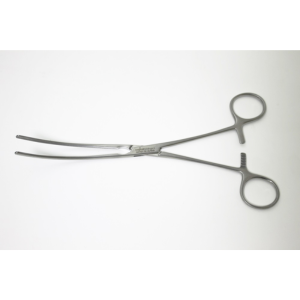
2. Army-Navy Retractor
- Description: Flat, curved metal with a handle in the center and retracting blades at both ends.
- Use: Commonly used in orthopedic and general surgery to expose deeper layers.
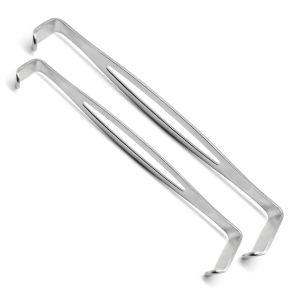
3. Richardson Retractor
- Description: Curved blade with a right-angle handle.
- Use: Used to retract deep abdominal or chest wall tissue.
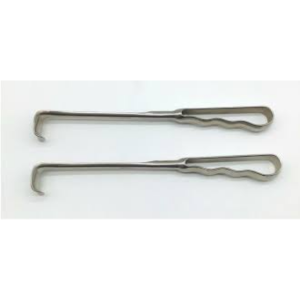
4. Deaver Retractor
- Description: Large, flat, and curved blade.
- Use: Used to retract deep organs like the liver or intestines in abdominal surgery.
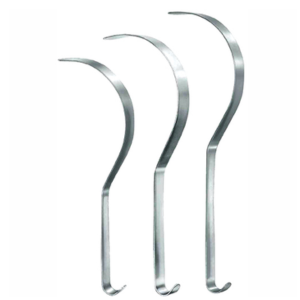
5. Balfour Retractor (Self-retaining)
- Description: Self-retaining retractor with lateral and central blades.
- Use: Used in major abdominal surgeries to hold the incision open without needing hands.
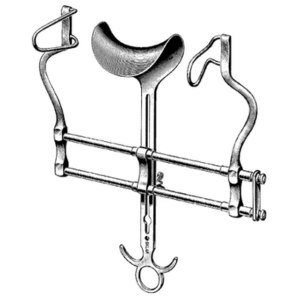
6. Gelpi Retractor (Self-retaining)
- Description: Sharp, curved prongs with a ratchet lock.
- Use: Used in orthopedic and spine surgeries to retract tissue or muscle.
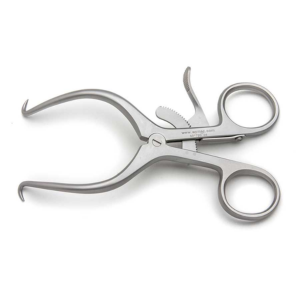
7. Weitlaner Retractor (Self-retaining)
- Description: Similar to Gelpi but with multiple prongs and a ratchet mechanism.
- Use: Commonly used in neurosurgery or shallow incisions to hold back soft tissue.
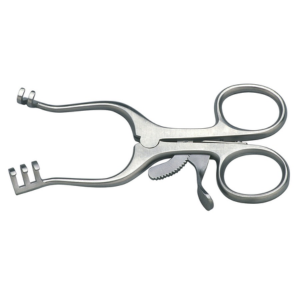
8. Malleable (Ribbon) Retractor
Use: Ideal for gently retracting soft tissues and organs in various shapes and depths.
Description: Thin, flexible metal strip that can be bent to shape.
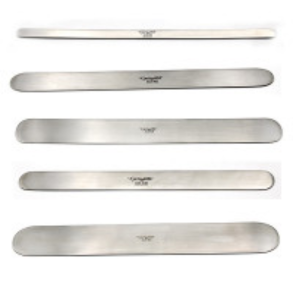
Suction and Access Instruments
These instruments help remove blood, fluids, or debris from the surgical field (suction) and provide access to deep or hollow areas during surgery (access). They are essential for maintaining a clear view of the operative site.
1. Yankauer Suction Tip
- Description: A rigid, slightly curved suction tube with a bulbous head and side holes.
- Use: Used for general suctioning during surgery, especially in the oral cavity and throat. It prevents tissue damage while suctioning.
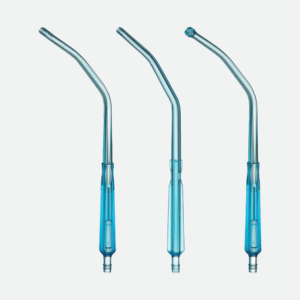
2. Poole Suction Tip
- Description: A two-piece instrument with multiple holes to prevent tissue blockage.
- Use: Ideal for suctioning large volumes of fluid, especially in abdominal surgeries (e.g., peritoneal cavity).
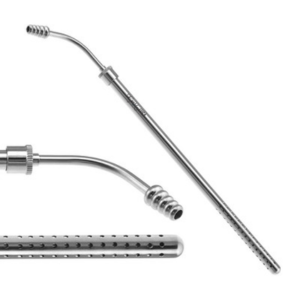
3. Frazier Suction Tip
- Description: A fine, angled suction tube with a thumb control valve.
- Use: Used for precise suction in neurosurgery, ENT (ear, nose, throat), or orthopedic procedures.
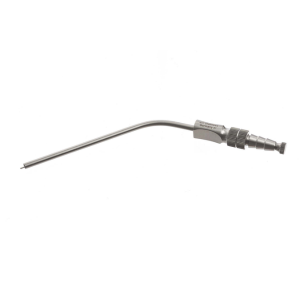
4. Trocars and Cannulas
- Description: Sharp-pointed instrument (trocar) housed in a tube (cannula).
- Use: Used to create ports of entry during laparoscopic (keyhole) surgeries for inserting cameras and instruments.
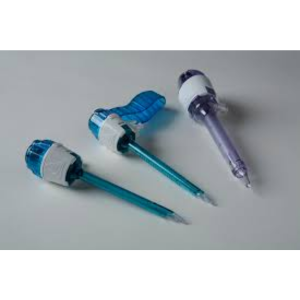
5. Veress Needle
- Description: A spring-loaded needle used with a blunt tip.
- Use: Used to create pneumoperitoneum (inflate the abdomen with CO₂) before inserting laparoscopic ports.
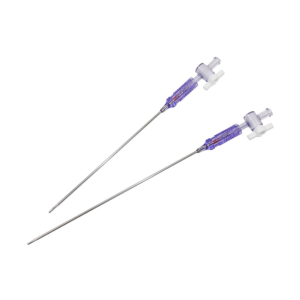
6. Laparoscopic Ports (Trocars)
Use: Provide access for laparoscopic instruments (camera, scissors, graspers).
Description: Hollow tubes with valves inserted into the abdomen.
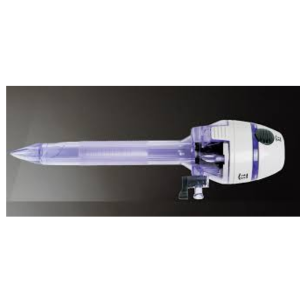
FAQs:
- What are the main surgical instruments?
The main surgical instruments are grouped by their functions in surgery. Here’s an overview of the key categories and examples of commonly used tools:
- Scalpel (e.g., #10, #15 blades)
- Scissors (e.g., Metzenbaum for delicate tissue, Mayo for tougher tissue)
- Dissectors (e.g., Metzenbaum scissors used for blunt dissection)
- Forceps (e.g., Adson, Debakey, Allis)
- Needle Holders (e.g., Mayo-Hegar, Crile-Wood)
- Towel Clamps (e.g., Backhaus)
- Hemostats (e.g., Mosquito, Kelly, Crile)
- Bulldog clamps
- Vascular clamps
- Hand-held retractors (e.g., Army-Navy, Senn)
- Self-retaining retractors (e.g., Weitlaner, Balfour)
- Skin hooks
- Needle drivers
- Suture scissors
- Staplers (e.g., skin staplers, gastrointestinal staplers)
- Yankauer suction tip
- Poole suction tip
- Probes
- Dilators (e.g., Hegar dilators)
Each surgical specialty might have its own additional specific tools, but these are the core instruments found in most operating rooms.
Which instrument is used in OT?
In the Operating Theatre (OT), a wide range of surgical instruments is used, depending on the procedure. However, there are several standard instruments found in almost every surgical setup:
Common Instruments Used in the OT:
1. Scalpel
- Used for making precise incisions.
- Common blades: #10, #11, #15.
2. Scissors
- Mayo scissors – for cutting tough tissue.
- Metzenbaum scissors – for delicate tissue dissection.
3. Forceps
- Tissue forceps – to grasp tissue (e.g., Adson, toothed forceps).
- Dressing forceps – for handling gauze or dressings.
4. Needle Holder
- E.g., Mayo-Hegar – to hold needles for suturing.
5. Hemostats / Clamps
- E.g., Mosquito, Kelly, Crile clamps – to clamp blood vessels and control bleeding.
6. Retractors
- Hand-held: Army-Navy, Senn.
- Self-retaining: Weitlaner, Balfour – to hold back tissue and expose surgical sites.
7. Suction Apparatus
- Yankauer or Poole suction tip – to remove blood and fluids from the surgical area.
8. Towel Clamps
- E.g., Backhaus clamp – to secure surgical drapes.
9. Electrocautery Instrument
- Used for cutting and coagulation using electric current.
10. Surgical Drapes and Sterile Covers
- While not “instruments,” they’re essential for maintaining a sterile field.
These instruments are sterilized and prepared in sets known as surgical trays, tailored to the type of surgery (e.g., general, orthopedic, gynecological).
CONCLUSIONS:
Surgical instruments are specialized tools used by surgeons during operations to perform specific functions such as cutting, dissecting, grasping, clamping, and suturing. They are broadly categorized into:
- Cutting Instruments – e.g., scalpel, scissors (for incisions and tissue dissection).
- Grasping/Holding Instruments – e.g., forceps, needle holders (to hold tissue or needles).
- Clamping Instruments – e.g., hemostats (to control bleeding by clamping vessels).
- Retracting Instruments – e.g., retractors (to hold back tissue and improve visibility).
- Suction Instruments – e.g., Yankauer suction tip (to remove fluids).
- Suturing Instruments – e.g., needle holders, suture scissors (to close wounds).
These tools are essential for maintaining precision, safety, and effectiveness during surgical procedures.
